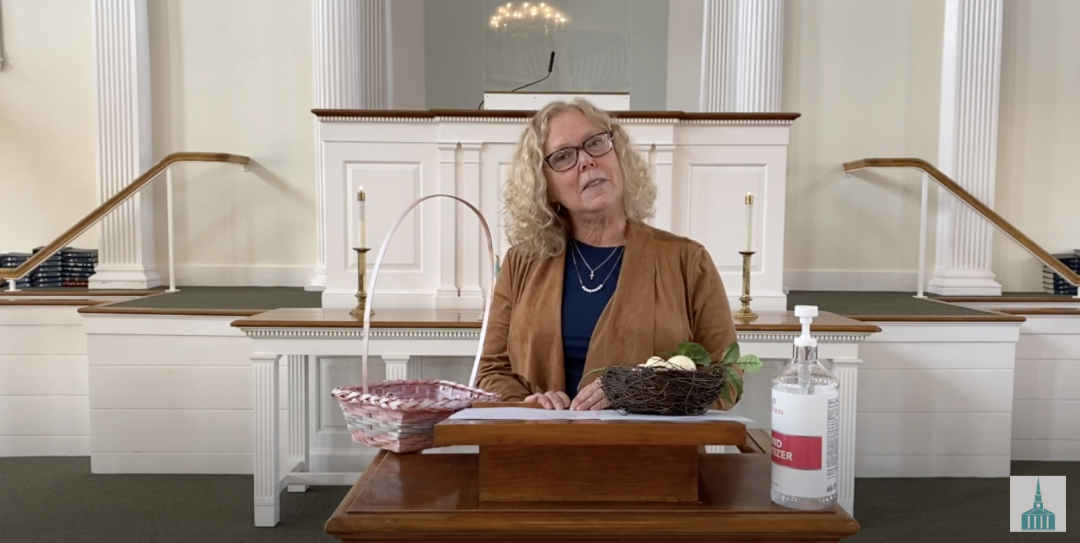Down to the River to Pray: Bird Songs

Speaker: The Rev. Jake Miles Joseph
March 14, 2021
Sermon for Sunday, March 14, 2021
The Rev. Jake Miles Joseph, Associate Minister
Psalm 19:1-4 NRSV
Take Me Down to the River to Pray: Bird Songs
Today is the halftime show for Lent—we are half-way between Ash Wednesday and Easter! It is at this time in Lent, that I always like to ask the question: What is the real purpose of this season of penance, waiting, and praying? While there are many answers, our Scripture passage today for Lent is my favorite because it points us towards prayer as something greater than words. It has been a year of a lot of words—so many that we are being directed in Psalm 19 towards prayer that comes through gesture, through being present to nature, and through observing.
You see, my thesis for Lent is that it is all about seeing things in a new way. Whether you give something up, add a new spiritual practice, or read something new—this time of the year while we wait for Spring is all about preparing ourselves to see resurrection again (hopefully) in a new way! Lent is about preparing ourselves to see resurrection again in a new way.
When I read our Psalm for today, I understood prayer and the connection between Jesus and Nature in a new way—very much like my colleague Judi just described in her children’s story.
The heavens or the skies are telling or demonstrating the glory of God; and the firmament filled with birds proclaims God’s handiwork. There is no speech. Nor are there words. Their voice is not heard. Yet their voice goes out through all the earth. Their words to the end of the world.
Beautiful! Birds. This passage is showing us how to pray like birds—with winds of hope, gestures of the sacred, and in community formation. Sometimes - and this is hard for us in the UCC - prayer doesn’t always need more talking and more noise.
What immediately came to mind with Psalm 19:1-4 is where I have witnessed the prayer birds and nature? Because of the water, meadow, and mountains, Connecticut is a birding paradise! Robins, red bellied woodpeckers, wild turkeys, blue jays, cranes, sparrows, and every imaginable form of verbose sea bird can be found! This state has turned me into something of a bird watcher. One of my favorite family traditions and “bird prayer meetings” has always been a pilgrimage to Connecticut in September. No matter where I was living, I would try and come here. This of course has been made easier by living here now! Every year, Gerhard and I go out in the boat with my family to watch the annual Swallow Migration. If you have never seen this wonderous event, let me tell you it is on the same level for me of natural wonder as a sunset over the Pacific Ocean or a boat ride at Niagara Falls. Those are great, but the greatest and most beautiful natural wonder and wordless prayer I have ever witnessed is in Old Saybrook in the quiet estuary of the Connecticut River every September.
One travel blogger writes about this little know but spectacular avian prayer meeting and the coming of autumn this way, “Every year, the Connecticut skies swirl with activity. Nicknamed an “avian ballet,” the annual tree swallow migration takes place from late summer to early fall. These colorful winged creatures soar over the Connecticut River in droves, and the views will take your breath away. On some days, you'll see as many as one million birds in the air at once...The annual summertime show of swallows is a sight to behold. You may have seen these colorful birds nesting in trees. Their blue and green feathers are hard to miss. Beginning in late August, tree swallows congregate on a small island on the Connecticut River. At sunset, they soar toward the reeds, where they'll rest for the night. Because there's safety in numbers, the tree swallows fly at the same time. Spectators gaze in awe as the birds soar through the breeze and loop across the sky [forming tornados and animated clouds of every shape]. As the sun sets along the river, you'll be met with astonishing sights.”[1]
That boat ride for me always marks the end of summer and the entry to autumn with a sunset and a million-bird dance avian ballet. It means something more powerful than words to me, to my family as we sit in awe and silence. It also means something to the birds. It means safety in numbers. The birds, like us these days, never touch (they maintain social distance), but they stay in community. Their movements create shapes that inspire. The swallows could just come to the river and land and hide in the reeds, but first—as the sun sets—they celebrate God’s creation and they mark the end of the day by creating beauty together for 30 mins. They are silent not making a sound—even millions strong—the whole time. Yet they communicate with each other and the Divine—swirling, dancing, diving, twirling!
This morning, I woke up to the sound of birds for the first time in 2021—with the changing of the seasons comes the arrival of these songs without notes or words or lyrics, but they are filled with meaning as they signal the coming of Spring.
Here in the middle of Lent, in the middle of a pandemic, at the edge of Spring and a new Easter Resurrection, we find this funny Psalm about finding prayer in nature and how we don’t need to speak to pray. Today, we have a lesson that isn’t just for the birds, as the old expression goes. Today, our new Lent perspective, is that there is much we can learn from the birds about prayer and sticking together in hard times —especially the great dances of autumn performed as a prayer meeting, an annual revival, a harvest fest of hope of the Connecticut River Swallows.
Yale University’s Professor of Christian Communication, Dr. Thomas H Troeger[2], is a beloved academic, musician and hymn writer. We even commissioned a hymn from him here at First Church. One of his hymns, which he actually wrote about Romans 8:26, I feel is perfect for this half-time service of Lent as we reflect on the prayer of nature and the silent dances and prayers of the birds. It reads:
The song and prayer of birds
is melody alone.
Their hymns employ no words.
Their praise is purely tone.
Their song is prayer enough.
Love hears what sound conveys,
and love does not rebuff
a creature’s wordless praise.
And so we trust that prayer
does not depend on words
to reach the source of care
who understands the birds.
Amen.
[1] https://www.onlyinyourstate.com/connecticut/swallow-migration-ct/
[2] https://divinity.yale.edu/faculty-and-research/yds-faculty/thomas-h-troeger

